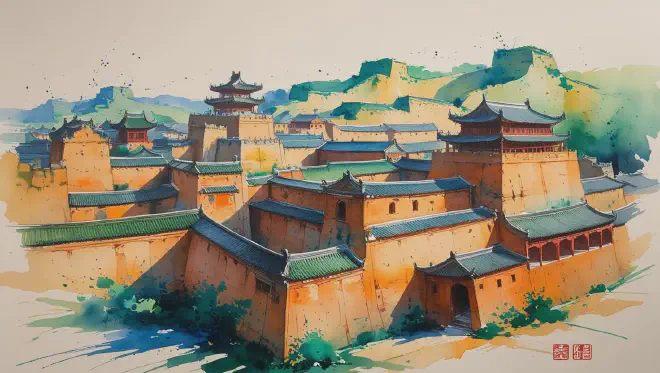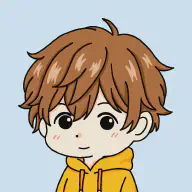Preface: The City of Stone Caves and Coal Smoke
Located in northern Shanxi Province, Datong carries a unique charm in its deep history and desolate landscapes. Once the capital of the Northern Wei Dynasty, this ancient city serves as a treasure trove of Buddhist relics, most notably the Yungang Grottoes, while also bearing the marks of modernization as a center of coal industry. Old and new intermingle throughout the city, and in the cold winds that sweep through its streets, shadows of bygone eras remain deeply etched.
Winter brings dry air that chills to the bone, while spring carries yellow dust that clouds the sky. Yet within this harshness lies what feels like the city’s quiet sincerity and hidden beauty.
I came here not quite as a tourist, but feeling as if guided by some thread of time’s connection.

Day 1: Dry Winds and the Stillness of Buddhas
I boarded an early morning high-speed train from Beijing West Station, arriving in Datong just before noon. Stepping out of the station, the sky was clear but cold wind brushed against my cheeks. During the taxi ride to my accommodation, I watched through the window as well-maintained roads and still-under-construction high-rise buildings stretched out before me. Between them, old gray brick houses stood weathered but steadfast, as if enduring wind and snow through the ages.
My lodging was a guesthouse in a corner of the old quarter, housed in a renovated Qing Dynasty building with a traditional courtyard layout. The creaking of wood and shadows in the dim corridors seemed to bind past and present together. After dropping off my luggage and taking a brief rest, I immediately set off for the Yungang Grottoes.
A forty-minute taxi ride west revealed countless caves carved into the mountainside and the Buddhas within them. The Yungang Grottoes, carved during the 5th-century Northern Wei period, represent the birthplace of Chinese Buddhist sculpture.
Standing before the massive smiling Shakyamuni statue, I felt as though those eyes could see right through me. Though carved from stone, there was unmistakably breath there, prayer there. In the wind-swept caves, tourist voices seemed distant, leaving only the Buddhas’ silence to reign supreme.
As evening approached and the sky began turning gray, the grotto sculptures sank into shadow. In the taxi returning to town, I closed my eyes in silence, and behind my eyelids floated that enormous face and its profound stillness.
For dinner, I found a local restaurant near the guesthouse. The menu was written entirely in Chinese characters on the wall, of which I could read only a few. The proprietress kindly recommended several dishes: dao xiao mian (hand-cut noodles), grilled lamb skewers, and pickled cabbage salad. Each dish was simple yet robust, warming me to the core.
Back in my room, streetlights glowed dimly outside the window, and few people walked the streets. Datong’s nights come early. In the quiet, I turned off the bedside lamp and fell asleep thinking of the Buddhas’ gazes.
Day 2: The Walled City and Soot-Stained Landscapes
I woke not to birdsong but to the distant sound of construction vehicles. The guesthouse breakfast consisted of wheat porridge, boiled eggs, fried bread, and pickled vegetables—simple and gentle flavors.
I spent the morning walking through the old quarter. This area, called Datong Ancient City, still maintains its reconstructed city walls built during the Ming Dynasty. The gray brick roads carried a slightly damp earthen scent, and with each step, I seemed to hear voices from the past.
Walking atop the city wall, I could see modern high-rises to the east and brick houses to the west. Datong felt like a city caught in the gap between past and present, never fully belonging to either. Perhaps this ambiguity is what puts travelers’ hearts at ease.
In the afternoon, I visited Shanhua Temple. Founded during the Tang Dynasty and rebuilt in the Yuan period, this temple’s solid, imposing structure creates the illusion of stepping into another era entirely upon passing through its gates. Inside the main hall, large wooden Buddhas sit in meditation while incense fragrance quietly fills the air.
After paying my respects, I took a break at a teahouse behind the temple. Elderly locals played go while a young woman quietly read a book. I ordered jasmine tea and sesame cookies, surrendering myself to the atmosphere for a while.
Before sunset, I walked the city wall perimeter once more, then enjoyed dinner at a more upscale restaurant featuring braised beef and cold dishes made with Shanxi’s famous aged vinegar. The complimentary almond tofu dessert, with its gentle sweetness, provided a fitting end to the day.
That night, I stood in the guesthouse courtyard, gazing up at the sky. The moon hung faintly between clouds, stars barely visible, yet being under that same sky made me feel connected to something vast and flowing.
Day 3: The Market and Farewell Smoke
On my final day, I rose early to visit the nearby morning market. Located in a corner of the brick alleyways, the market bustled with activity even before dawn. Fresh tofu, green cilantro, and the aroma of fragrant shaobing filled the air as locals with shopping bags moved about their business.
At an elderly couple’s stall, I bought a thin sesame pancake and ate it standing at a street corner. As the nutty flavor spread through my mouth, I was suddenly filled with an almost overwhelming emotion.
Returning to the guesthouse to pack, I glanced at the plum tree in the courtyard. Still in bud, it would surely bloom with white flowers come spring. I found myself wanting to return then—with that thought, I left the guesthouse behind.
From the taxi window, the city’s landscape looked somehow different from what I’d seen on the first day. The gray buildings and soot-stained walls appeared softer somehow. Travel, I think, isn’t about what you see changing, but about your own eyes changing.
Reaching the station and passing through the turnstiles, I heard the wind call once behind me. Perhaps Datong’s wind was seeing me off to the very end.
Epilogue: What Was Felt Despite Being Imaginary
This journey was imagined; I never actually visited Datong. Yet the landscapes, sounds, smells, and people’s kindness that existed there remain undeniably within me.
The Buddha’s gaze, soot-stained brick walls, quiet courtyards, a warm cup of tea—though imaginary, they were unmistakably felt and continue to breathe somewhere in my heart.
This was a journey that, though imagined, feels as though it truly happened.

